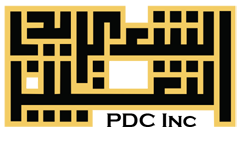
Between a Rock and a Hard Place: The Displaced People of Rukban
By Yakin Ouederni
In the arid, remote deserts that stretch across southern Syria, a 55 km plot of land hosts a population of internally displaced peoples (IDPs) who are some of the most impoverished in the country, yet also some of the most neglected.
Plagued by hunger, widespread diseases and water scarcity, the IDPs suffer not only from miserable living conditions, but from the harrowing apathy they have been met with from the global community as well.
Settling in Rukban Camp
In 2016, the United States (US) designated the 55 km area, known as Rukban, along the Syria-Jordan border a demilitarized zone, meaning no Russian or Syrian Regime airplanes can fly over and carry out strikes within the perimeter of the zone. This was done to protect al-Tanf border crossing in Iraq, a critical base for the US-led coalition against the Islamic State (ISIS), which is only 19 km away. As Regime airstrikes and ISIS warfare intensified in other parts of Syria, people fled towards Rukban for guaranteed safety from the airstrikes that had demolished their homes.
They arrived Rukban with the intent of crossing into Jordan, who initially prevented a majority of them from entering on the basis that the country had exceeded its maximum intake of Syrian refugees. Upon being denied entry, the IDPs set up tents between the berms of Syria and Jordan, establishing a makeshift camp. As the population of Rukban camp increased, it became a mix of people from several different tribes and provinces, individuals from rebel groups, smugglers, and possible ISIS militants.

Amid fears of ISIS infiltration, Jordan began to restrict entry even more. After a suicide car bomber coming from Rukban killed six Jordanian border guards at the crossing point — an attack for which ISIS claimed responsibility — in June 2016, the country blocked Rukban residents from entering entirely. Since then, ISIS has carried out regular attacks in the camp, further strengthening Jordan’s reasoning for shutting the border. However, the restriction on entrance is not limited to IDPs. Jordan has also heavily limited the entrance of humanitarian aid into Rukban due to fears from terrorist attacks on Jordanian soldiers and aid volunteers.

A child wanders around in Rukban Camp, Rukban. Source: People Demand Change Inc.
Humanitarian Issues
Today, there are about 80,000 IDPs settled in Rukban, and the effects of Jordan’s closed doors are apparent. If the searing heat of the vast desert isn’t rough enough, no formal humanitarian organization has entered Rukban in a year, leading to rapidly deteriorating living conditions.
With no proper sewage system or restroom holes deep enough to prevent contamination, the squalid camp is subject to widespread epidemiological diseases. The only two clinics present are not properly staffed or equipped enough to treat common cases such as diarrhea or bacterial infections. Access to water is extremely limited with only a few wells and cross-border pipes providing barely enough for the whole community. Insufficient amounts of food are irregularly provided by the US-backed Free Syrian Army (FSA) units protecting Rukban, or brought in by smugglers who sell at inflated prices. There are about 21,000 school-aged individuals with no access to primary or secondary education. The lack of humanitarian assistance — in addition to the psychological trauma many residents suffer and the constant fear from ISIS attacks — has made Rukban quite literally a living hell.
Seeing as the camp is close to uninhabitable, why didn’t the IDPs consider heading back towards Syria? I asked this question to Bassam Barabandi, a co-founder of People Demand Change Inc. who has been in touch with officials in Rukban.
“[The IDPs] had two options: Going back meant death, staying meant starvation. So they chose starvation of course,” he responded.

Waste accumulation in Rukban Camp, Rukban. Source: People Demand Change Inc.
Jordan’s Closed Borders
The international community and organizations like Human Rights Watch have largely condemned Jordan for closing its borders, especially when Rukban’s conditions rapidly worsened subsequent to the policy. However, Jordan has stood by its decision, with government officials expressing that they will not bear sole responsibility for the refugee crisis as a whole.
Jordan’s former foreign minister Nasser Judeh argued that his country has already “provided for refugees what no other country has.” In addition to the 1.4 million registered Syrian refugees in Jordan, the country has been host to over 600,000 Palestinians since the first Palestinian exodus in 1948. Jordan’s fragile economy is dependent on foreign aid and is plagued by debt, unemployment, and dwindled trade due to the surrounding conflict. The country claims that supporting refugees contributes to its hardships and warns of economic collapse if the international community does not help.

A young boy makes mud blocks that are used to construct houses in the camp. Source: People Demand Change Inc.
Trapped Between Two Berms
Stranded between the life-threatening turmoil of the Syrian war and Jordan’s locked doors, the helpless cries of Rukban’s 80,000 have drowned among the cacophony of international conversations about security, economic pressures and military strategies. With over two years of inaction, 80,000 seems to have become just another statistic of this devastating conflict.
Apart from the humanitarian consequences, the international community’s handling of Rukban signals a more daunting concern: numbness towards suffering and the normalization of disaster have become dangerously common throughout the seven years of this war. What is even more frightening is that not much has been done to change that.
